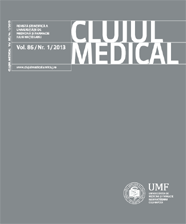Use Of Alternative Therapies In Patients Submitted To Anorectal Manometry
Keywords:
alternative therapy, anorectal manometryAbstract
Background and aim. Anorectal manometry is used in the evaluation of disorders of the lower gastrointestinal tract: constipation, incontinence, anorectal pain. Most of these conditions are invalidating. Moreover, the patients do not benefit from a perfect therapy. Therefore many of them also use alternative therapies, but we still miss data on the use of alternative therapies in anorectal disorders. Therefore we looked for the use of alternative therapies in patients submitted to anorectal manometry.
Material and methods. 60 consecutive patients submitted to anorectal manometry were questioned about the use of alternative therapy by a specially developed structured questionnaire. All of them accepted to answer the questionnaire after careful instruction. The questions were administered by a qualified staff and filled before the investigation.
Results. The indication for anorectal manometry was: incontinence 18 cases (20%), constipation 33 cases (55%), anorectal pain 9 cases (15%). 44 out of 60 (73%) patients admitted to have used one or more alternative therapies, usually together with the observance of medical dietary or pharmacological prescriptions. These were: homeopathy 10 (17%), herbal therapy 36 (60%), acupuncture 1 (0.02%), bioenergy resonance 11 (18%). Users were mainly females with a low level of education. The use of alternative therapy was similar in all three subgroups of patients.
Conclusion. These data emphasizes the importance of the use of alternative therapies in patients with anorectal disorders submitted to anorectal manometry.
Downloads
Published
How to Cite
Issue
Section
License
The authors are required to transfer the copyright of the published paper to the journal. This is done by agreeing to sign the Copyright Assignment Form. Whenever the case, authors are also required to send permissions to reproduce material (such as illustrations) from the copyright holder.

The papers published in the journal are licensed under a Creative Commons Attribution-NonCommercial-NoDerivatives 4.0 International License.

